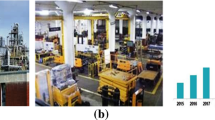Abstract
The goal of a secure communication protocol is to ensure the data integrity, data secrecy, authentication, and replay protection. Now, because of the low computational capability, tiny memory, and limited energy resources’, designing a secure sensor network communication protocol, is indeed a challenging task. In order to ensure data secrecy in wireless sensor networks (WSN), most of the existing state of the art solutions, are merely emphasized on the conventional encryption modes like CTR, CBC, etc. On the other hand, for offering data integrity, they need to rely upon a secure MAC. Therefore, to ensure both the privacy and integrity of the WSN data, they need to perform at least 2n block encryptions, where n represents the number of blocks. In this article, we propose a variant of the conventional CTR mode, called integrity-aware counter (IA-CTR) mode, which requires only n + 1 of block encryptions to ensure both the privacy and integrity of the WSN message on a single pass.



Similar content being viewed by others
References
Chen, H., & Perrig, A. (2003). Security and privacy in sensor networks. IEEE communications Magazine, 36(10), 103–105.
Shi, E., & Perrig, A. (2002). Designing secure sensor networks. IEEE communications Magazine, 40(8), 102–114.
Karlof, C., Sastry, N., & Wagner, D. (2004). TinySec: a link layer security architecture for wireless sensor networks. In Proceedings of the 2nd international conference on embedded networked sensor systems (pp. 162–175). ACM.
Tobarra, L., Cazorla, D., & Cuartero, F. (2007). Formal analysis of sensor network encryption protocol (SNEP). In IEEE international conference on mobile adhoc and sensor systems, 8–11 Oct 2007 (pp. 1–6). IEEE.
Alliance, Z. B. (2005). ZigBee specification. Technical Report Document 053474r06, version1.0.
Luk, M., Mezzour, G., Perrig, A., & Gligor, V. (2007). MiniSec: A secure sensor network communication architecture. ACM 978-1-59593-638-7/07/0004IPSN’07.
Bellare, M., Desai, A., Jokipii, E., & Rogaway, P. (1997). A concrete security treatment of symmetric encryption. In IEEE Proceeding of the 38th Symposium on Foundations of Computer Science (pp. 394–403).
Bellare, M., & Namprempre, C. (2008). Authenticated encryption: relations among notions and analysis of the generic composition paradigm. Journal of Cryptology, 21(4), 469–491.
ISO/IEC 9797. (1989). Data cryptographic techniques—Data integrity mechanism using a cryptographic check function employing a block cipher algorithm. BSI
Meyer, C. H., & Matyas, S. M. (1982). Cryptography: A new dimension in computer data security. New York: Wiley.
Rogaway, P., Bellare, M., & Black, J. (2003). OCB: A block-cipher mode of operation for efficient authenticated encryption. ACM Transactions on Information and System Security (TISSEC), 6(3), 365–403.
Rogaway, P. (2004). Efficient instantiations of tweakable block-ciphers and refinements to modes OCB and PMAC. In Proceeding of the ASIACRYPT 2004, LNCS, 3329, Springer, Heidelberg (pp. 16–31).
Ferguson, N. (2002). Collision attacks on OCB. NIST CSRC website.
Crypto++ Library. http://www.cryptopp.com
Gope, P., & Hwang, T. (2015). Lightweight and energy efficient mutual authentication and key agreement scheme with user anonymity for secure communication in global mobility networks. IEEE Systems Journal. doi:10.1109/JSYST.2015.2416396.
Gope, P., & Hwang, T. (2015). Enhanced secure mutual authentication, and key agreement scheme preserving user anonymity in global mobile networks. Wireless Personal Communications, 82(4), 2231–2245.
Hwang, T., & Gope, P. (2013). Provably secure mutual authentication and key exchange scheme for expeditious mobile communication through synchronously one-time Secrets. Wireless Personal Communications,. doi:10.1007/s11277-013-1501-5.
Ristenpart, T., Tromer, E., Shacham, H., & Savage, S. (2009). Hey, you, get off of my cloud: exploring information leakage in third-party compute clouds. In Proceedings of the 16th ACM conference on Computer and communications security (CCS ‘09), ACM, New York, NY, USA (pp. 199–212).
Acknowledgments
This work is financially supported by the National Science Council of Republic of China (Taiwan), under Contract NSC MOST 103-2221-E-006-177. The authors would like to thank the National Science Council of Republic of China for their benign supports.
Author information
Authors and Affiliations
Corresponding author
Rights and permissions
About this article
Cite this article
Hwang, T., Gope, P. IA-CTR: Integrity-Aware Conventional Counter Mode for Secure and Efficient Communication in Wireless Sensor Networks. Wireless Pers Commun 94, 467–479 (2017). https://doi.org/10.1007/s11277-015-3096-5
Published:
Issue Date:
DOI: https://doi.org/10.1007/s11277-015-3096-5




